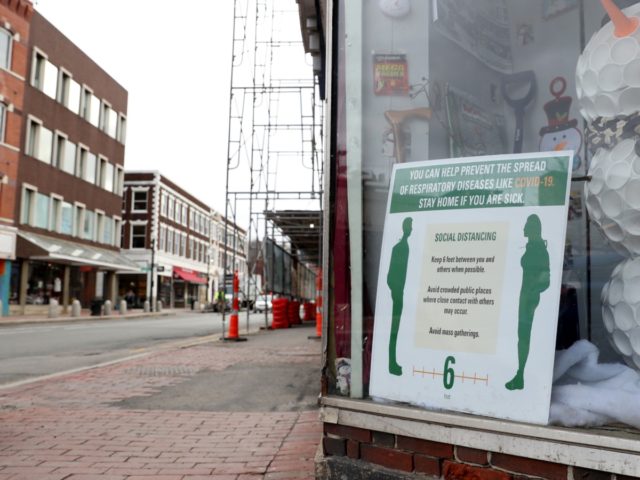A study by researchers at Harvard University’s School of Public Health found social distancing practices will likely be required until 2022 unless treatment or a vaccine becomes available to counter the spread of the infection caused by the novel coronavirus.
Published Tuesday at Science, the study concluded intermittent social distancing practices will probably be needed in order to ensure enough hospital capacity for patients critically ill with the COVID-19 infection.
The Harvard School of Public Health reported:
Even if one 8- to 12-week period of social distancing is successful in “flattening the curve”—keeping the infection rate low enough so that hospitals aren’t overwhelmed—many people will remain susceptible to COVID-19, said Yonatan Grad, assistant professor of immunology and co-senior author of the study, in an April 15, 2020 WBUR interview. In the absence of other interventions, there could be a resurgence of COVID-19 among this susceptible group, which would require further intermittent periods of social distancing until enough of the population develops immunity, either through becoming infected or through a vaccine.
Though the researchers admit prolonged social distancing is likely to bring about significant economic and emotional consequences, they said their goal, ultimately, is to “identify likely trajectories of the epidemic under alternative approaches, identify complementary interventions such as expanding ICU capacity and identifying treatments to reduce ICU demand, and to spur innovative ideas to expand the list of options to bring the pandemic under long-term control.”
“[T]he potentially catastrophic burden on the healthcare system that is predicted if distancing is poorly effective and/or not sustained for long enough,” is their concern, they stressed.
In the U.S., some governors are organizing to discuss strategies for re-opening their economies.
In Canada, however, Prime Minister Justin Trudeau said his country will “take months of continued, determined effort” to recover from the effects of the coronavirus.
“We will not be coming back to our former normal situation; we can’t do that until we have developed a vaccine and that could take 12 to 18 months,” Trudeau said, reported the National Post. “We don’t exactly know how long — we hope it’s earlier rather than later.”
According to a Gallup survey, also published Tuesday, most Americans are taking a wait-and-see approach when it comes to how quickly they resume their post-lockdown activities.
Video Source: Governor Ron DeSantis / FacebookWhen asked, “Once government restrictions on social contact are lifted and businesses and schools start to reopen, how quickly do you think you would return to your normal activities, including interacting with people in public?” only 20 percent of those surveyed April 3-5 responded “immediately,” and 71 percent said they would “wait to see what happens with the coronavirus before resuming.”
When asked the same question March 27-29, participants’ views were essentially the same, with 22 percent stating they would resume activities “immediately,” and 69 percent responding they would “wait to see.”
According to the survey, Republicans (31 percent) are more likely to predict a return to their normal activities right away.
“Few Americans are ready to get back to normal right now, and as the country looks to the future, some segments of society have grown even less comfortable with the idea of resuming normal daily activities and interpersonal contacts,” Gallup concluded.
The Harvard researchers stated in order to implement on-and-off social distancing, “it will be necessary to carry out widespread viral testing for surveillance to monitor when the prevalence thresholds that trigger the beginning or end of distancing have been crossed.”
They explained:
The observation that strong, temporary social distancing can lead to especially large resurgences agrees with data from the 1918 influenza pandemic in the United States, in which the size of the autumn 1918 peak of infection was inversely associated with that of a subsequent winter peak after interventions were no longer in place.
“Treatments or vaccines for [the COVID-19 infection] would reduce the duration and intensity of social distancing required to maintain control of the epidemic,” they explained.

COMMENTS
Please let us know if you're having issues with commenting.